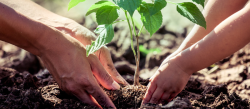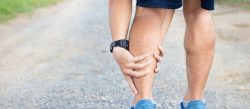How to maintain joint mobility with glucosamine
Published October 23, 2022

Do you often wake up with an aching back, stiff shoulder or sore knees? Do you struggle more with everyday tasks like hanging clothes on the line, opening jars or simply getting out of the car? Well, you are not alone. Joint pain often develops between the ages of 30 and 50 and is increasingly common as we get older. In fact, 1 in 7 Australians experience some form of arthritis during their lifetime.
Unfortunately, many people overlook the early warning signs that may lead to joint damage. Minor niggles are often dismissed as the normal aches and pains that come with getting older, or the result of overdoing it at the gym.
While it is true that our joints can withstand many years of use, overuse or injury, not listening to your body when you feel something is wrong can lead to issues in the future. That’s why it’s important to look after your joints, identify the early signs of joint wear and take steps to reduce further cartilage loss.
Read on to learn more about what causes joint pain, how to identify the early signs of joint issues, and how glucosamine may reduce mild joint pain associated with mild osteoarthritis.
What causes joint pain?
First of all, let’s address what joint pain actually is. Simply put, joint pain is probably the first sign that you may have a reduction of cartilage – the thin layer of connective tissue that acts as a ‘cushion’, protecting your knees, joints and bones from grinding against one another.
The average healthy adult has between 2mm–3mm of cartilage in their knee. Over time, our active lifestyles take their toll and the once-spongy cushion of cartilage begins to ‘wear and tear’. The joint linings produce less synovial fluid and our joints gradually stiffen and dry out.
Common causes of joint pain include:
- Injury – strains, sprains, dislocations & fractures
- Age-related conditions, like arthritis, bursitis or tendinitis
This can lead to osteoarthritis, a condition suffered by many Australians that is characterised by reduced joint mobility and inflammation.
What are the early signs of joint damage?
Mild pain, stiffness or limited movement in any of your joints – particularly weight-bearing joints like your knees and hips – may be early symptoms of joint damage. In addition, you might notice the following:
- Pain and stiffness first thing in the morning, which lasts for up to half an hour but may improve as the day progresses
- Pain that gets worse when weight or pressure is put on the joint
- Pain that is aggravated by exercise or certain activities such as walking up and down stairs
If you’re experiencing any of the above symptoms, make an appointment with your GP to establish the causes of your joint pain and discuss the best course of action.
How health supplements can assist in joint pain relief
Our joints are critical to keeping us active and mobile throughout life, but they tend to be subjected to a great deal of wear and tear. Taking supplements is a popular option to maintain joint mobility.
Glucosamine may reduce further cartilage wear as well as assist some symptoms associated with mild osteoarthritis such as:
- Support joint mobility
- Relieve mild joint stiffness
- Relieve mild joint pain.
What is glucosamine?
Glucosamine is a natural compound found in the body that acts as a key building block of cartilage.
It also goes into making the slippery fluid – known as synovial fluid – that keeps your joints mobile and well lubricated.
Although glucosamine is produced naturally by our bodies, mild osteoarthritis sufferers may benefit from supplementing their body’s reserves with an extra boost. Glucosamine supplementation, when taken consistently, may relieve mild joint pain associated with mild osteoarthritis.
Studies have shown that a daily dose of 1500mg of glucosamine sulfate is required to assist with some symptoms of mild osteoarthritis.
Dietary considerations
As most glucosamine supplements are sourced from crustacean shells, it is important to check with your doctor or pharmacist if you are allergic to shellfish.
How to manage joint pain in your daily life
Taking daily glucosamine supplements may not work for everyone. Fortunately, there are additional ingredients available which may help to support joints.
When it comes to minimising further joint damage, it’s always recommended to participate in regular, moderate impact weight-bearing and cardio exercise, as well as maintaining a healthy weight. Here are three additional tips to consider when those first twinges of pain start to appear:
- Wear sensible shoes. If you’re suffering from knee pain, decrease the stress on your joints by choosing flat, comfortable shoes. High heels are the worst culprits so it’s time to ditch those stilettos!
- Take the weight off your feet. If your job or daily life involves you spending long periods on your feet, remember to give yourself regular breaks. Long periods either sitting or standing can cause stiffness, so alternate between the two at regular intervals (try to change position every 30 minutes or so). Office workers with mild osteoarthritis may find standing desks beneficial.
- Handle with care. Avoid activities that can cause excess pressure on your joints, such as heavy lifting. If you must, handle heavy items carefully: squat to lift an object rather than bending forward, and carry it close to your body. Your thigh muscles should bear the brunt of the work, never your lower back. If you can, slide objects rather than lifting them.
Here are some more helpful tips that can help to reduce inflammation and relieve joint pain.
How Nature’s Own can help
Nature’s Own have developed a range of glucosamine supplements for supporting joints.
Take a look at the full range of Joint and Mobility products
Always read the label and follow the directions for use.
MAT-AU-2200520
Learn about which Nature's Own product may be appropriate for you.
SEE THE PRODUCTS HERE







